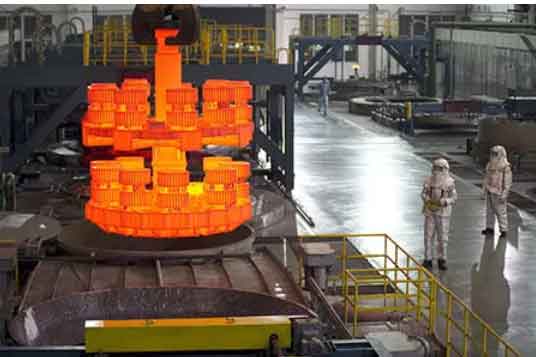Worm gears are commonly used in various applications, including power transmission systems. Heat treatment plays a critical role in ensuring the durability and performance of worm gears. However, there are specific challenges associated with heat treating worm gears. Here are some challenges and their corresponding solutions in worm gear manufacturing:

- Distortion:
- Worm gears are prone to distortion during the heat treatment process due to their complex geometry and the differences in heat transfer rates between the worm and the gear. Distortion can lead to poor gear meshing, increased backlash, and reduced efficiency.
- Solution: Proper fixturing and careful control of heating and cooling rates are essential to minimize distortion. The use of specialized fixtures or jigs during heat treatment can help maintain the desired shape and alignment of the worm gear. Controlled quenching techniques, such as oil quenching with carefully designed agitation, can help minimize distortion and ensure uniform cooling.
- Surface Decarburization:
- During heat treatment, the surface of worm gears can be susceptible to decarburization, which is the loss of carbon from the surface layer. Decarburization can reduce the hardness and wear resistance of the gear teeth, compromising their performance.
- Solution: Protective atmospheres or controlled gas or vacuum environments can be used during heat treatment to minimize or prevent surface decarburization. Ensuring proper carbon potential and gas composition during carburizing or carbonitriding processes helps maintain the desired carbon content on the gear’s surface.
- Case Depth Control:
- Achieving consistent and precise case depth in worm gears is challenging due to the complex geometry and varying section thicknesses. Case depth refers to the depth of the hardened layer in the gear’s surface, which directly affects its wear resistance and durability.
- Solution: Advanced process monitoring and control techniques, such as infrared temperature sensing, can be employed to ensure uniform heating and precise control of the case depth. Computerized process control systems and optimized process parameters help achieve the desired case depth consistently.
- Tooth Grinding Challenges:
- After heat treatment, worm gears often undergo tooth grinding to achieve the desired tooth profile and surface finish. However, heat-treated materials can be more challenging to grind due to their increased hardness and reduced machinability.
- Solution: Employing specialized grinding wheels, such as cubic boron nitride (CBN) or diamond abrasive wheels, can effectively grind hardened worm gears. Using appropriate cutting parameters, such as wheel speed, feed rate, and coolant application, can help minimize heat buildup and achieve the desired surface finish.
- Post-Heat Treatment Inspection:
- Heat-treated worm gears require thorough inspection to ensure quality and performance. However, inspecting the complex geometry of worm gears can be challenging due to their multiple teeth, helical shape, and gear profile.
- Solution: Advanced inspection techniques, such as coordinate measuring machines (CMMs) with gear-specific software, can accurately measure the dimensional and profile deviations of worm gears. Non-destructive testing methods like magnetic particle inspection or ultrasonic testing can also be employed to detect any surface defects or cracks.
Addressing these challenges in heat treating worm gears requires a combination of careful process design, specialized equipment, advanced monitoring and control systems, and skilled personnel. Collaboration with heat treatment experts and adherence to industry standards and specifications can help ensure successful heat treatment processes for worm gear manufacturing.
